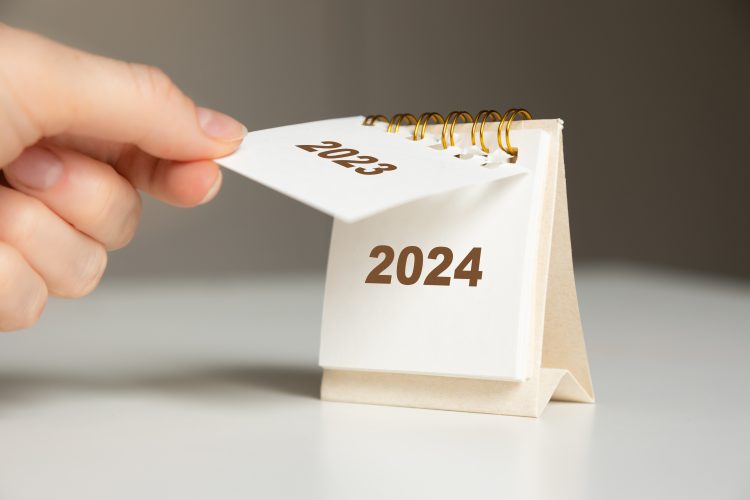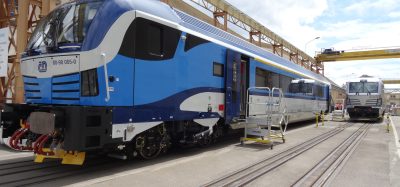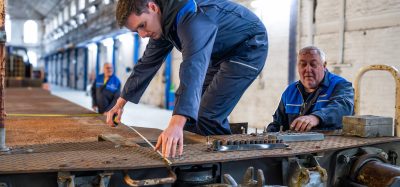SilverRail’s Vice President of UK Rail, David Pitt, shares top industry predictions for 2024
Posted: 18 January 2024 | Emily Budgen | No comments yet
SilverRail’s Vice President of UK Rail, David Pitt, has shared his predictions for the rail industry for the year 2024.


Despite 2023 representing a challenging year for passengers across the UK rail network, industry expert David Pitt, Vice President of UK Rail at SilverRail, has revealed a series of landmark changes that could take place this year to positively transform Britain’s railways.
From the launch of a new, centralised body in the form of Great British Railways, to the rollout of rail ticket sales on UK high streets, Pitt breaks down the key areas in which consumers could benefit in 2024, whilst also highlighting some critical barriers that remain.
- 2024 the year government must act on its Great British Railways plan
In May 2021, the government proposed a White Paper which focussed on the creation of ‘Great British Railways’ (GBR), a single national body, to address the unsustainable and fragmented nature of the current rail system, aiming for efficiency, cost savings, customer focus, and adaptability to post-pandemic changes in demand.
Pitt explains: “It’s a clear plan that was seen as being good for the passenger and future of the industry – there were very few critics. To those having their trains cancelled or still finding it difficult to access the cheaper fares, it isn’t clear why the government has been unable to act upon their plan. Whilst plans to create a consolidated digital retail solution have now been scrapped, it is hoped that much of the simplification referred to in the White Paper can still be progressed.
“This is somewhat dependent on the successful completion of the Rail Reform Bill that is currently in draft and being debated by an all party group. For rail to improve, this Bill has to be legislated for in 2024.”
- Rail must become less fragmented and more centralised
Amidst growing dissatisfaction amongst travellers in recent years, the debate continues between the benefits of nationalisation of the railways and the continued involvement of the private sector. However, Pitt argues: “Privatisation v nationalisation is a political question and largely irrelevant, whereas for the operation of the railways we should focus on centralisation, eradicating waste and putting the customer at the heart of the rail travel proposition.
“Having a single GBR brand across the network and the removal of such things as operator only tickets would remove much confusion for the customer. This operational framework has been in place for years with Transport for London’s bus network and works well with both passengers and operators alike.
“Market fragmentation has clearly been the undoing of the franchise system, leaving the customer confused about who to buy their ticket from. Having a situation where a customer can buy a ticket from one operator but not be allowed to use it on a train run by a competitor despite it leaving the same station and arriving at the same destination, is plainly wrong. This is a classic example of suiting the service provider at the expense of the customer.”
- Ticket purchasing will become possible on UK high streets
Whilst the introduction of e-tickets and contactless payments have enhanced the passenger experience for some, there are still millions across the UK who either struggle to or are unable to engage with online ticketing. Further, highlighting the importance of in-person ticket offices, SilverRail’s research also found that nearly half (48%) of Brits favour purchasing tickets at the station as opposed to online. In a positive move for inclusivity across the UK rail network, Pitt explains:
“The rail industry will look to reach out to communities and offer rail ticketing on the high street and in corner shops. This will allow those without mobile phones and / or a bank account to still access the best internet prices. There are currently around 85% of the population that don’t use trains as part of their travel considerations and for rail travel to prosper, it is important that this figure is reduced dramatically.”
- Price hikes stunting full UK rail revival
Last year, passengers were hit by a 5.9% increase in rail fares and are now preparing for a similar, but slightly reduced 4.9% increase this March. Pitt adds: “Though it is encouraging to see more passengers return to travelling by train, the peak of revenue achieved in 2018 is still some way off. The government’s response is to increase pricing and to avoid schemes that may have a potential revenue hit. Unfortunately, this will only drive passengers away further, probably continuing to work from home or pushing them back into their car”.
“The test of best value has been failing for some time and like any business the rail industry needs continued investment to get the basics right such as punctuality and cleanliness. One phenomenon that seems to become more prevalent since the pandemic is with operators missing stops or terminating services prior to their intended destination. This simply should not be allowed.
“Another area of required improvement is the need for simplified fares along with more flexible ticketing options. An advanced fare that covers the intended train and two possible departures thereafter for example, isn’t difficult to offer but this would allow passengers to have some flexibility. Afterall, if a train is cancelled we readily allow customers to use the follow on trains. LNER’s forthcoming trial is a good example of what can be achieved but we need to move more quickly than a single operator running a two year trial. Again let’s start seeing these issues from the customer’s perspective and make the necessary changes.”
- The need to replace outdated tech in the UK rail industry
Consumer-facing technology in the rail industry has improved greatly and received widespread attention, but Pitt reveals that the UK’s backend operating infrastructure needs to be reviewed in 2024: “In some cases, operational updates are still dependent on spreadsheets making it impossible to readily use that information across the supply chain.
“For too long, suppliers with modern technology like SilverRail have had to find workarounds because the data can be limited and disjointed. With the Rail Delivery Group’s intention to share more data, this should start to enable more customer facing services that keep passengers better informed.”
For the UK to close the gap on its European counterparts, now is the time to act according to Pitt: “Europe is steaming full speed ahead with its rail industry and consistently invests into it. Just recently, the Austrian government invested €21bn into its infrastructure, set out in the ÖBB framework plan.
“Most notably, this investment also went towards promoting efficient travel that helps to combat climate change and encouraging passengers to choose trains as opposed to planes. In contrast, we have seen HS2 cancelled and the White Paper largely dismantled.
“In the next five years, I would hope to see rail become a central focus as part of a national strategy on mass movement to support commuting / business, leisure and freight. This should also consider how rail can sit at the heart of a multi modal travel, not only joining up journeys for customers but also enabling the consolidation of service, pricing and fulfilment information across those different modes.”
More Like This
Northern seeks the engineers of the future
Erika Lewis appointed CEO at Connected Places Catapult
Transport Focus Chief to take over as chair of Independent Rail Retailers
OUT NOW: The Definitive Guide to Rail’s Digital Future
The rail industry is undergoing a digital revolution, and you need to be ready. We have released our latest market report, “Track Insight: Digitalisation.”
This is not just another report; it’s your comprehensive guide to understanding and leveraging the profound technological shifts reshaping our industry. We move beyond the buzzwords to show you the tangible realities of AI, IoT, and advanced data analytics in rail.
Discover how to:
- Optimise operations and maintenance with real-time insights.
- Enhance passenger services through seamless, high-speed connectivity.
- Leverage technologies like LEO satellites to improve safety and efficiency.
Featuring expert analysis from leaders at Nomad Digital, Lucchini RS, Bentley Systems and more, this is a must-read for any rail professional.
Related topics
Cargo, Freight & Heavy-Haul, Funding & Finance, Technology & Software
Related organisations
Great British Railways (GBR), HS2, LNER, SilverRail, Transport for London







